Hiring great developers is hard, but hiring them fast, within your means, and without timezone issues is even harder.
That’s why more U.S. companies are turning to nearshore software development partners in Latin America. With timezone alignment, strong English skills, and deep technical talent, LATAM has become the preferred region for building agile, reliable engineering teams.
But not every company offering nearshore development services works the same way, and the difference shows in project delivery, communication, and long-term value.
This guide illustrates what nearshoring means, who the best nearshoring agencies will be in 2025, and how to choose the right partner based on your hiring goals.
What is a Nearshore Software Development Company?
A nearshore software development company recruits and places remote engineers from nearby regions, typically Latin America, into U.S. tech teams.
The focus is on long-term staffing, not outsourced delivery.
Hiring managers partner with nearshore teams to find backend developers, mobile engineers, DevOps specialists, or full-stack talent, to build internal capacity without the delays and costs of hiring locally.
Nearshore software development companies handle candidate sourcing, vetting, technical assessments, and onboarding. Support usually extends to contracts, compliance, and payroll, removing barriers that slow down team expansion.
With timezone alignment, cultural compatibility, and fluent English, nearshoring helps scale your AI & ML team while supporting quicker collaboration and efficient project management.
Latin American countries like Brazil, Argentina, Mexico, and Chile keep attracting interest as nearshore development destinations because of their strong technical skills, competitive rates, and similar business practices.
Why U.S. Companies Are Choosing Nearshore Companies for Software Development
More B2B SaaS teams are relying on nearshore partners to fill key technical roles without overextending budgets or timelines. Developers based in Latin America have strong technical capabilities, fluent English, and familiarity with U.S. business practices, which makes integration smooth.
Hiring with a nearshore software development company gives direct access to vetted engineers ready to join internal teams.
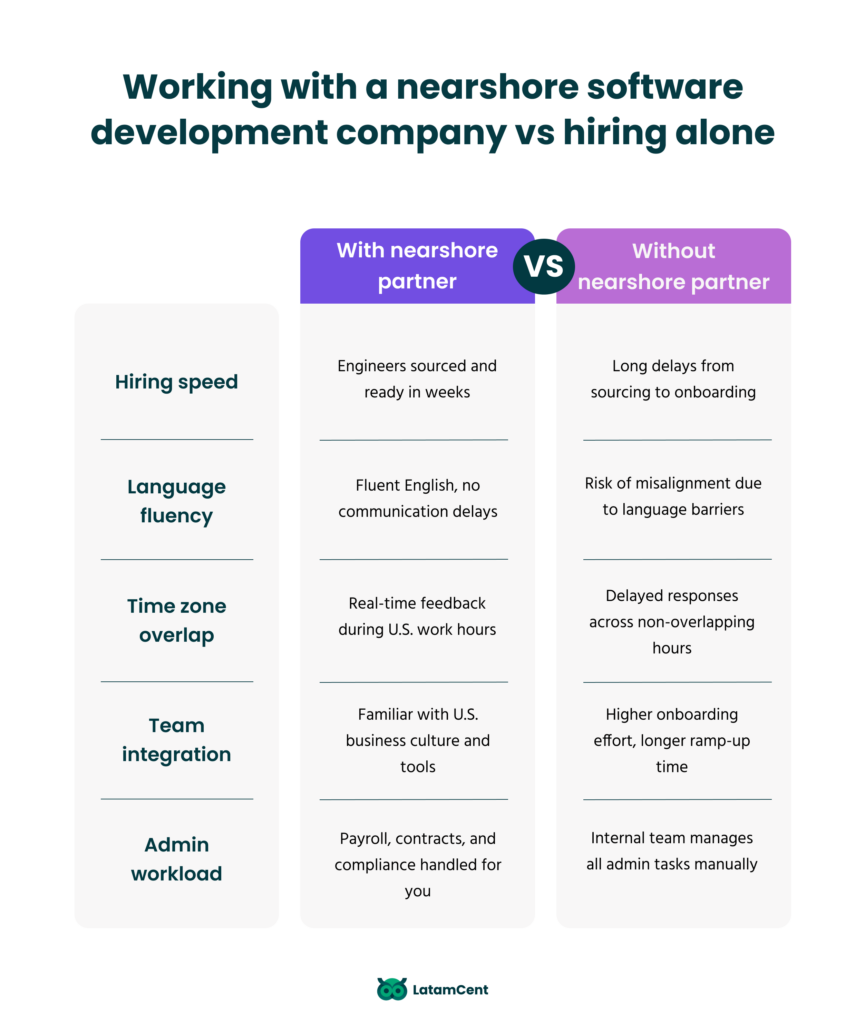
Nearshore companies can help hire the most technical roles, like:
Taking care of sourcing, vetting, onboarding, and payroll, reducing administrative overhead for expanding teams.
Time zone overlap makes daily collaboration easier, especially when project managers need fast feedback or updates during sprint cycles. Cultural alignment also improves long-term communication, helping nearshore development teams stay synced with internal priorities.
Factors That Define a Great Nearshore Development Partner
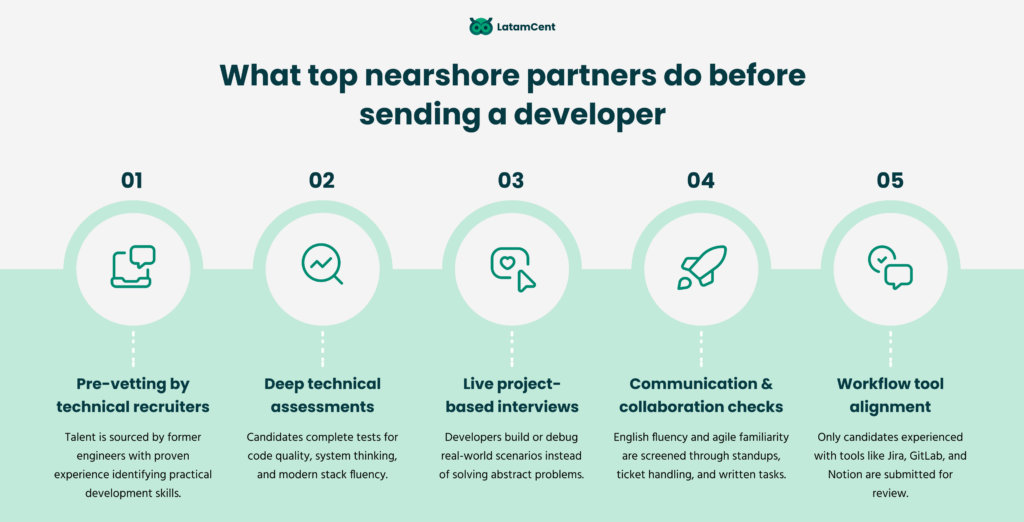
Proven Engineering Technical Expertise
What makes nearshore software development companies stand out is who does the hiring.
Recruiters from nearshore companies studied software engineering or worked in dev roles before moving into talent. That experience shows in how candidates are screened.
They test how a developer handles state logic, test APIs, document their decisions, and review pull requests. A resume doesn’t mean much without proof of real skills. Every candidate is tested for fluency in current stacks and performance under pressure.
Clean code and strong systems thinking come first.
U.S. companies hiring remote software development teams need talent that integrates quickly. Nearshore partners build pipelines with developers who have shipped high-quality software solutions.
English fluency & Agile Compatibility
Language differences cause delays.
Engineers need to write updates, join standups, and explain blockers clearly. Every candidate is screened on communication, written, verbal, and collaborative.
Many nearshore developers were prepared in agile methodologies early on, having used project management tools like Jira, ClickUp, or Trello. They’ve run sprint demos, estimated tickets, and pushed releases inside fast-moving teams.
Teams hiring nearshore software development services want consistency. Developers must align with internal culture and workflow. Strong communication and shared context keep projects moving without extra handholding.
Turnaround Speed, Communication, & Vetting Practices
Strong nearshore software development companies deliver qualified candidates in days, not weeks. That speed comes from a refined vetting system and a curated pipeline of skilled professionals in software engineering, QA, and DevOps.
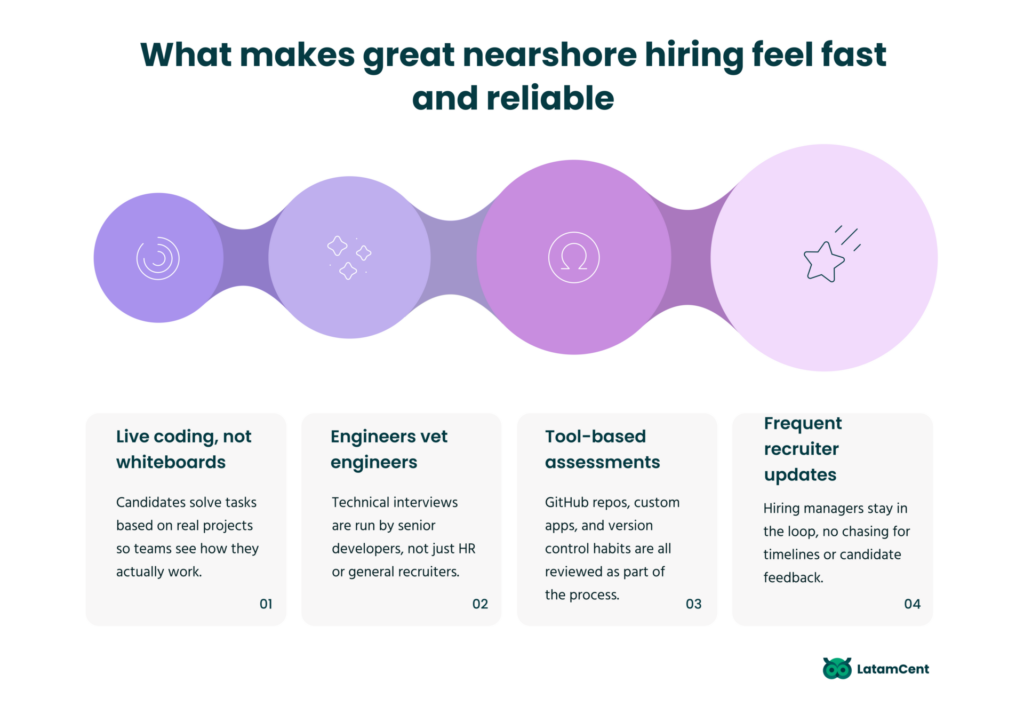
Candidates go through multi-step assessments:
- Live coding sessions based on real software development projects
- Technical interviews with senior engineers
- Reviews of GitHub history or custom-built apps
- English fluency and communication checks across written and verbal formats
Recruiters stay in close contact during the hiring process. Updates are frequent, and feedback cycles stay tight. U.S. project managers never have to track status or ask twice for changes.
Reliable nearshore partners respect urgency, communicate clearly, and vet like engineers, because many of them are.
Ability to Integrate With Internal Tools & Workflows
Hiring nearshore development teams only works when workflows line up. That means more than syncing calendars, it means engineers who know the tools your team uses daily.
Most developers placed by top nearshore software providers have experience working inside tools like Jira, Linear, Notion, or GitLab. They understand sprint velocity, know how to update tickets, and can jump into Slack threads without slowing things down.
Compatibility also shows up in subtle ways: following naming conventions, documenting pull requests properly, or adapting to your team’s branching strategy.
The best nearshore software development partners prioritize cultural alignment and workflow readiness, besides technical capabilities.
That’s how integration feels natural from day one.
Top 10 Software Development Nearshoring Companies in LATAM
1. LatamCent
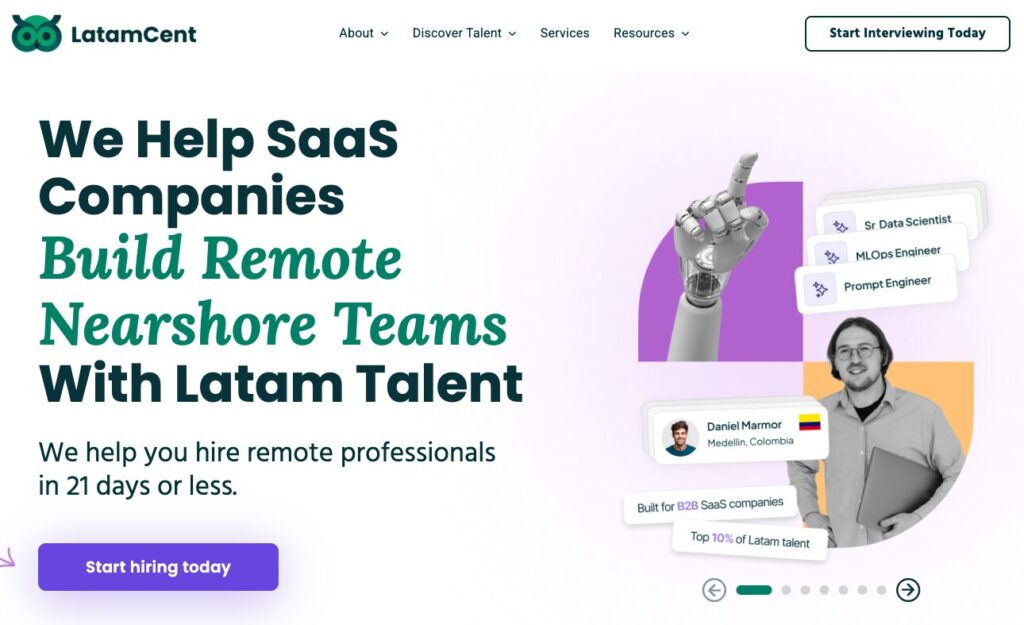
LatamCent, a top nearshoring & staffing agency for building teams in Latam, connects B2B SaaS U.S. companies with LATAM software developers using a deeply technical recruitment process.
Recruiters at LatamCent hold degrees in software engineering or IT and conduct peer-level code reviews, architecture discussions, and technical interviews.
Candidates pass through:
- Hands-on assessments in backend systems, mobile app development, and API integration
- English fluency evaluations that include sprint planning and asynchronous written updates
- Vetting of cultural alignment and familiarity with agile methodologies
In addition, LatamCent manages compliance, payroll, and HR administration, operating similarly to top Employer of Record (EOR) providers. Engineers are placed into existing delivery teams and work with the same project management tools and agile workflows used internally.
Every candidate enters familiar workflows using tools like Jira, Slack, and GitHub, which removes the conflict that typically comes with offshore outsourcing. U.S. teams get fast, structured access to nearshore software development talent that’s already aligned on process, timezone, and communication.
2. BairesDev
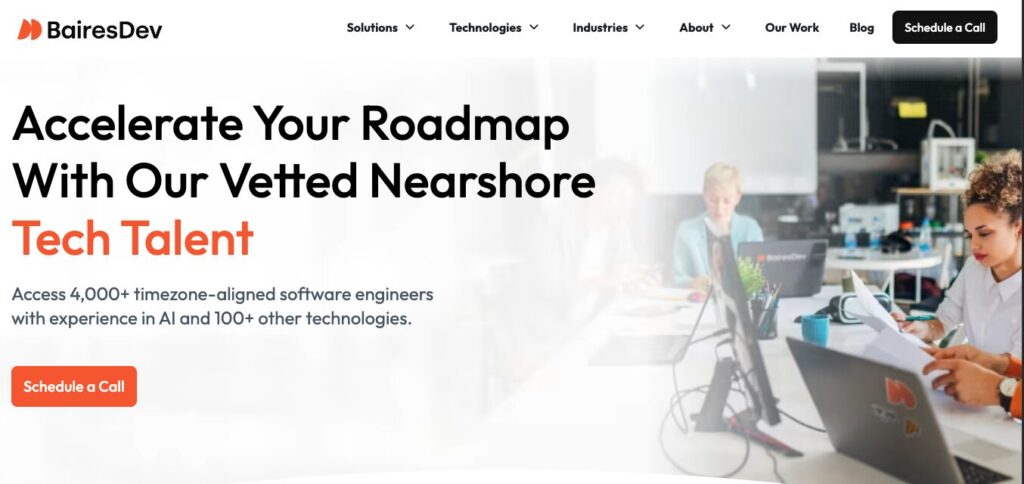
BairesDev focuses on identifying the top 1% of LATAM software developers for more general nearshore software development outsourcing.
Skill sets include full-stack development, quality assurance, cloud services, and mobile app development.
While BairesDev offers scale and versatility, the recruitment process tends to prioritize volume. Candidate matching may lean toward availability over more in-depth team integration or specific workflow alignment.
3. Cheesecake Labs
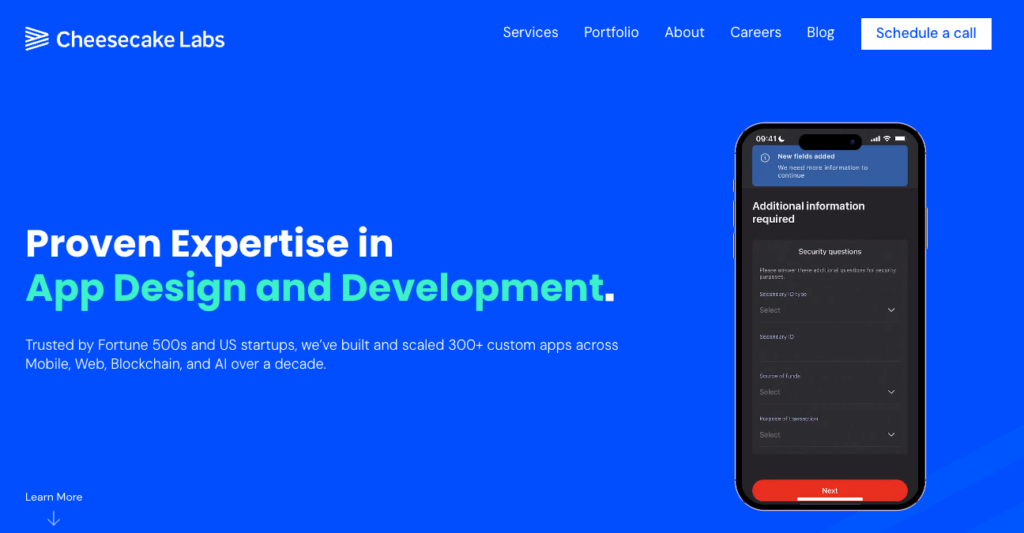
Cheesecake Labs delivers web and mobile app development from its hubs in the U.S. and Brazil, a country many startups are turning to for developer hiring due to its talent and timezone alignment.
Active since 2013, the company combines design thinking and engineering to support custom software development projects at all stages.
They stand out in design-led processes and strong QA cultures. Cheesecake Labs has been consistently top-ranked in LATAM for web development, mobile app development, and blockchain. Cheesecake Labs’ teams run design sprints, prototype fast, and pair programming remains an important practice.
4, DNAMIC

DNAMIC specializes in nearshore software development as a staff augmentation partner, a model often compared to full outsourcing in the staff augmentation vs outsourcing debate. They offer full-cycle recruiting, onboarding, technical interviews, and hiring that align with agile methodologies.
What sets DNAMIC apart is a strong focus on data-driven assessments and industry expertise.
Teams are evaluated using real coding challenges, performance metrics, and domain-specific case studies. Onboarding includes shadowing and immediate pairing with U.S.-based project managers.
5. 10Pearls

10Pearls delivers full-cycle nearshore software development in Latin America, from planning and architecture to maintenance and digital transformation. Their recruitment team works across cloud services, web and mobile apps, and legacy system modernization.
They take a consultative approach, offering technical assessments, security audits, and DevOps strategy before any code hits production. Candidates are aligned to U.S. time zones, use agile methodologies, and offer collaboration via shared workflows and many communication tools
6. Azumo
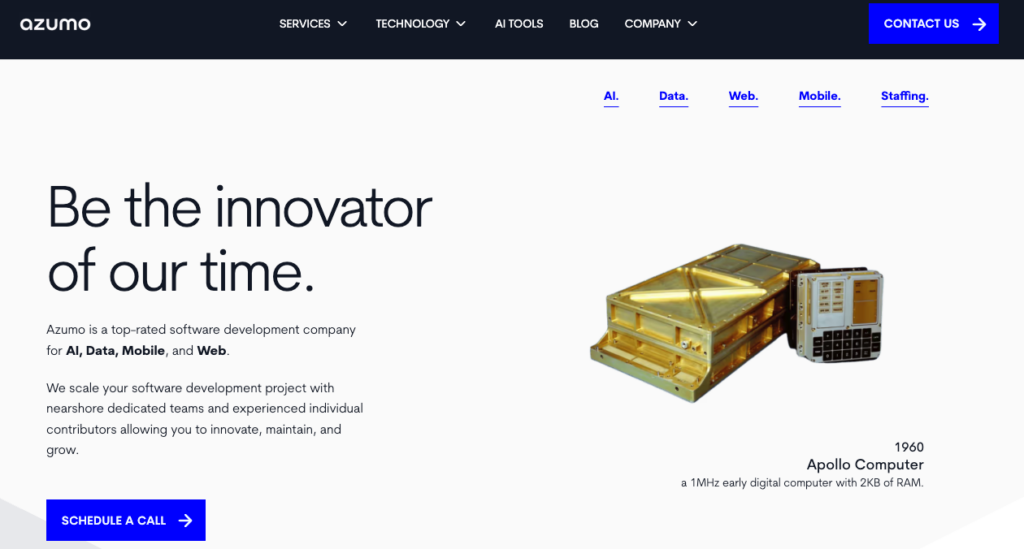
Azumo builds dedicated nearshore software development teams in Latin America, specializing in AI, data engineering, web applications, and mobile app development.
Founded in 2016, Azumo has grown to support both SMBs and enterprise clients using modern stacks like Docker, Kubernetes, and React.
They pair developers with U.S.-based project managers, provide virtual CTO consulting, and maintain a good Clutch rating. Their focus on outcome-driven delivery and intelligent app development gives teams access to specialized technical expertise without sacrificing timeliness or code quality.
Azumo is a strong option for companies looking to build with some of the best AI engineers in Latin America.
7. Gorilla Logic
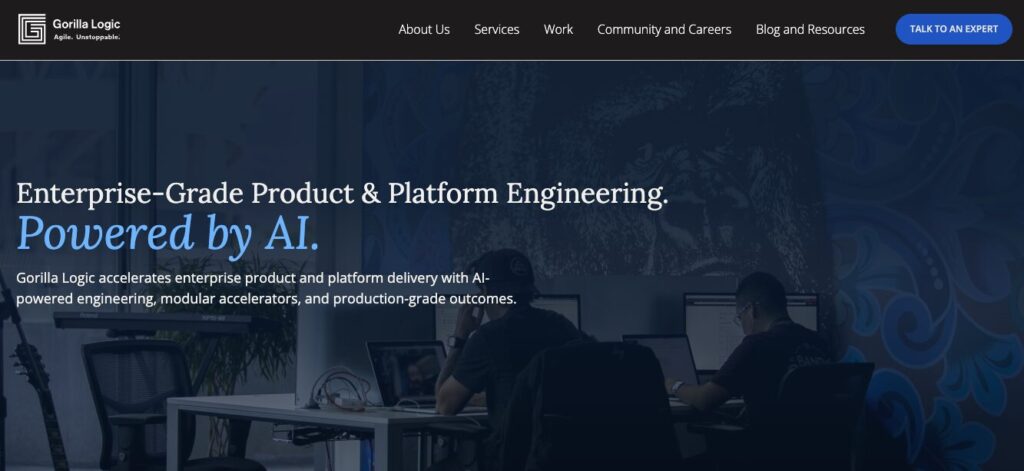
Gorilla Logic offers nearshore software development from Latin America, with hubs in Costa Rica, Mexico, and Colombia. They offer agile product engineering, cloud-native solutions, QA, and platform delivery.
Gorilla Logic focuses on building long-term engineering partnerships.
Teams include cloud architects, DevOps experts, QA engineers, and full-stack developers aligned to U.S. time zones. Their nearshore model emphasizes collaboration through shared sprint rhythms, daily standups, and integrated project management tools.
While Gorilla Logic focuses on engineering, many of these providers also rank among the best Latin American countries to hire sales talent for U.S. GTM expansion.
8. Vates
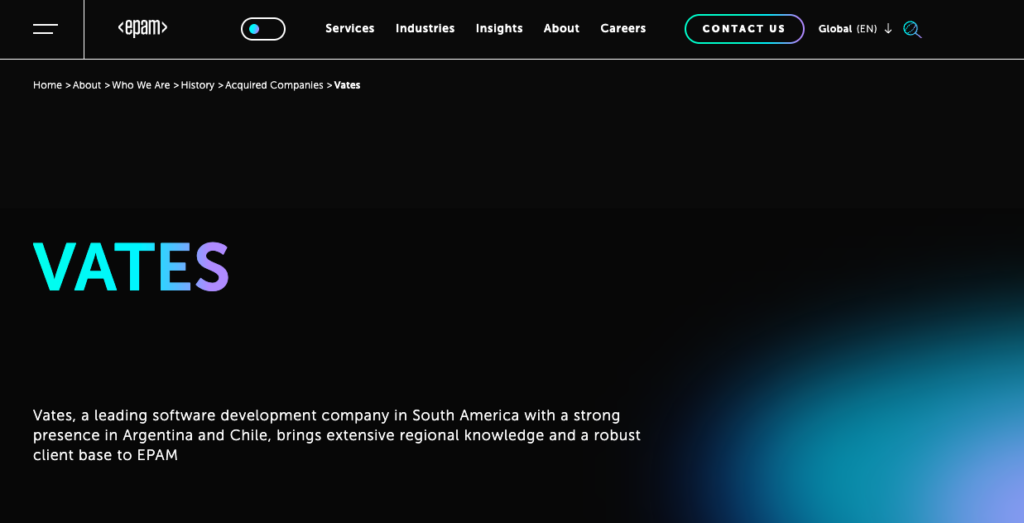
Vates is a nearshore software development company with 30+ years of delivering custom software services in Argentina and Chile. Their ISO and CMMI certifications underpin agile web development, testing, and R&D.
Project managers assign developers, QA experts, and systems engineers to cross-functional teams. Each group works through iterative delivery, using Jira and Atlassian tools to maintain workflow transparency.
Vates prides itself on delivering robust software engineering solutions with strong quality assurance, while keeping costs competitive.
9. Near
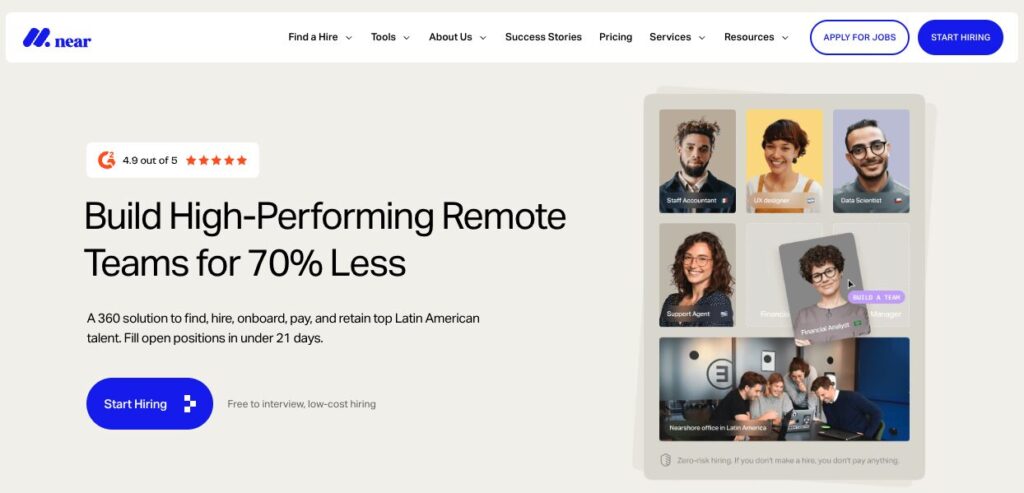
Near builds nearshore software development teams focused on speed and alignment. The company recruits engineers skilled in full-stack development, quality assurance, and cloud services in Latin America.
Their process emphasizes fast response, teams are staffed in just a few weeks, using similar sprint cycles and tight coordination with U.S. project managers.
Talent is recruited from major Latin American countries with a focus on English fluency and agile development workflows.
10. Luby Software

Luby Software offers a mature nearshore software development outsourcing model from Brazil, staffed with over 200+ engineers in mobile, custom web development, AI, data analytics, and cybersecurity.
Their strength is full-stack expertise, advanced tech stacks like AI/ML and platform engineering, and certifications that ensure quality assurance and process rigor. Project managers lead distributed teams through agile ceremonies, sprint demos, and backlog management.
Software Development Nearshoring: LATAM vs Offshore Models
LATAM nearshoring gives U.S. teams something offshore outsourcing rarely can: clarity.
When developers work in the same time zone, speak fluent English, and understand U.S. product culture, small things don’t get lost. Slack messages make sense, sprint goals are clear, and feedback lands the first time.
Engineers from Latin American countries like Colombia or Brazil match tech talent and align with the work culture of internal teams.
Timezone delays impact speed. Waiting 12 hours for a reply or holding sprint planning across opposite calendars adds real drag. That’s where rework comes in. A feature gets built wrong, a spec gets misunderstood, or no one flags an edge case in time.
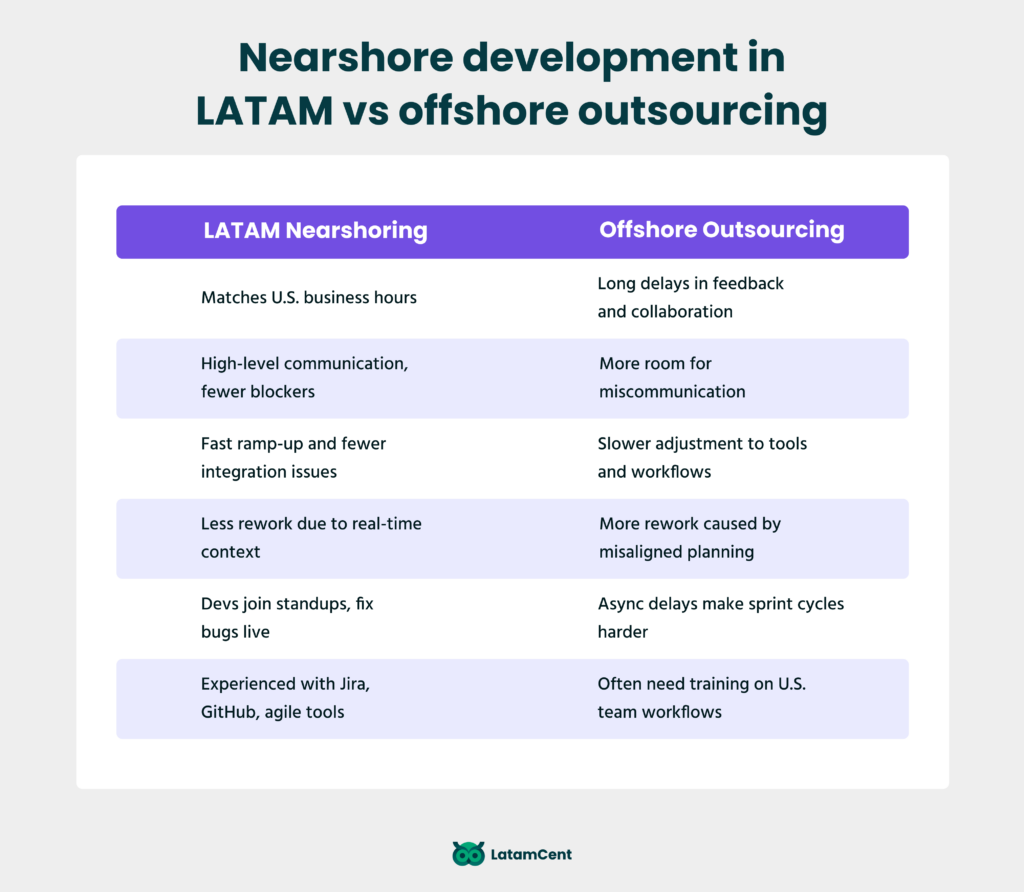
Nearshore software development teams solve this by being online when the rest of the product team is, debugging, reviewing code, or pushing fixes in real time.
Offshore companies may offer lower rates, but nearshore development wins on total cost.
Time saved during onboarding, fewer blockers during build, and less rework after QA translate to real savings. Nearshore outsourcing focuses on delivery preparations. Candidates are vetted for technical expertise and process fluency.
Distributed SaaS teams can reduce delivery lag by learning how to run effective standups across time zones with nearshore teams.
Here’s why nearshore software development partners in LATAM are gaining ground:
- Daily collaboration during U.S. business hours
- Strong English skills and cultural alignment
- Faster onboarding and lower rework rates
- Developers familiar with Jira, GitHub, and agile workflows
- Higher cost efficiency across full software projects
Questions to Ask Software Development Nearshoring Companies
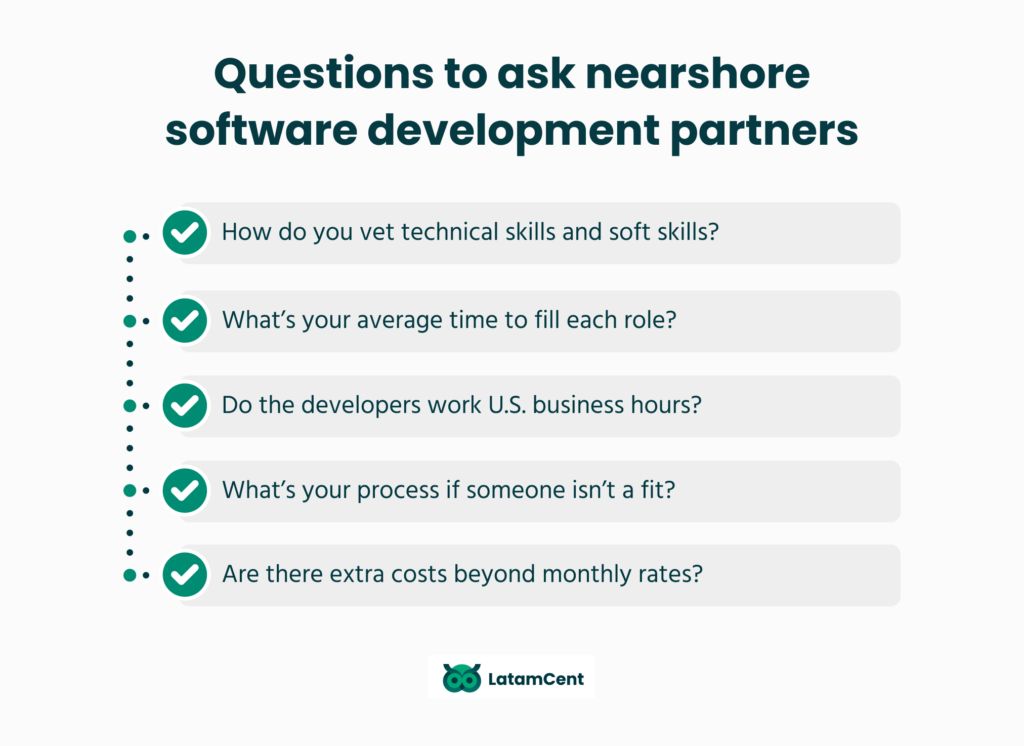
What’s Your Developer Vetting Process?
Not every nearshore company screens for the same things, and most won’t show you how their process works unless you ask. You want to know who’s doing the vetting, what technical standards they use, and how deep the evaluations go.
Ask if candidates are tested in relevant programming languages or just reviewed on GitHub.
See whether code quality, documentation, and communication are all assessed, or if it’s just a basic skills checklist. If you’re building a custom software development team, you need nearshore developers who’ve worked inside agile development teams.
The best nearshore partners can help you decide if you need a freelancer, contractor, or full-time hire based on your product roadmap and delivery urgency.
How Fast Can You Fill a Role or Team?
Speed is important, but not at the cost of quality.
Some nearshore software providers will promise a full squad in days, only to shuffle resumes that hardly match your requirements. Others take four to six weeks and hand over three people who are exactly what you need.
Ask for specifics.
How long does it take to source? How many pre-vetted software developers are in their current pipeline? If you’re scaling fast, you need a partner with dedicated teams that matches your time zone, tools, and tech stack.
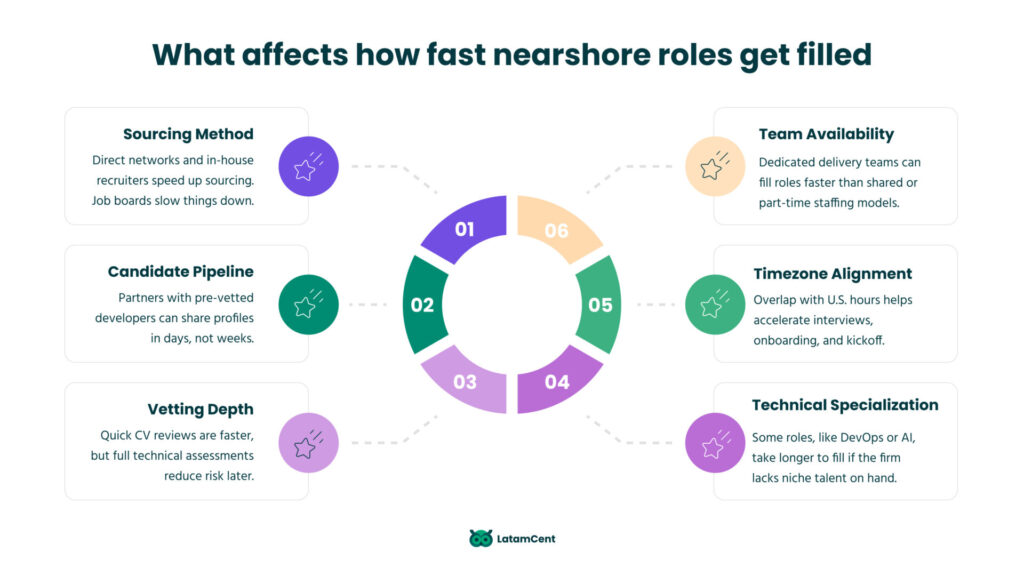
Find nearshore development companies that have a track record of ramping up software projects without ignoring steps.
Do the Candidates You Send Work U.S. Business Hours?
Time zone overlap makes or breaks delivery speed. If your standups happen at 9 a.m. EST, but the team logs in at noon, you’re always three hours behind on decisions.
Ask when the candidate developers are online. Not just a general “yes, we align”, get specifics.
Can they join daily calls? Will project managers respond midday? Most nearshore teams in Latin America work U.S. hours, but make sure the company isn’t stretching the truth just to land the contract.
What Happens if a Developer Isn’t a Good Fit?
No process is perfect. Even with vetting, sometimes someone doesn’t gel with your stack, your culture, or your workflow.
What matters is how the nearshore partner handles it.
Ask about replacement timelines. Ask if you’ll be billed during the change. A solid nearshore software development company already has backup candidates pre-screened and ready to step in, protecting your timeline and keeping the software project moving without a reset.
How is Your Pricing Structured, & Are There Hidden Fees?
Transparency should be standard, but it isn’t. Some nearshore companies add fees for onboarding, HR support, compliance, or replacement guarantees.
Get a clear breakdown of what’s included.
Is the cost per developer flat, month-to-month? Is payroll handled, or is it managed separately? For U.S. companies focused on cost efficiency and predictability, a clean pricing model matters as much as the talent itself.
Bonus tip: Ask if the pricing changes by country. Some nearshore development companies operate around multiple LATAM locations with different rate bands, it’s worth knowing upfront.
Conclusion
The difference between a good outsourcing partner and a great one comes down to process, alignment, and trust. The best nearshore software development companies help build real teams that ship faster, collaborate better, and scale at your speed.
Latin America has confirmed to be a standout nearshore development destination for U.S. startups that need speed without sacrificing quality. But choosing the right partner still requires asking the right questions, understanding how they vet developers, and knowing how their model fits with your internal workflows.
If you’re ready to hire nearshore software developers, get in touch with LatamCent. You’ll get vetted developers with proven software engineering experience, screened by recruiters who’ve worked in tech.



